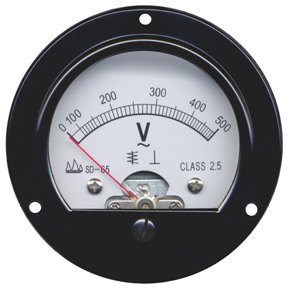Electric current is formed by moving electrons.
Conventional current and electron flow
Electron flow: Electrons moving from a negatively charged end to a positively charged end
Conventional current flow: Positive charges flowing from a positively charged end to a negatively charged end.
Measurement of electric current
An electric current I is a measure of the rate of flow of electric charge Q through a given cross section of a conductor.I = Q/t
Current = Charge / time
SI unit: ampere
Symbol: A
Instrument to measure: Ammeter
Ammeter must be connected in series in an electric circuit. Flow from + to - terminal.

Electric Circuit symbols

15.2 Electromotive Force and Potential Difference
The electric force (e.m.f.) of an electrical energy source is defined as the work done by the source in driving a unit charge round a complete circuit.
E = W/Q
E.M.F. of the power supply = work done/ charge
SI unit: joules per coulomb (J C-1) or Volt (V)
Instrument to measure: Voltmeter

Potential Difference
The potential difference (p.d.) between two points in an electric circuit is defined as the amount of electrical energy converted to other forms of energy when one coulomb of positive charge passes between the two points.
V = W/Q
Potential difference = Work done/Charge
SI unit: volt (V)
E.M.F. is provided by a source of electric energy.
P.D. refers to the electrical energy converted to other forms by a circuit component.
15.3 Resistance
Resistance is a measure of how difficult it is for an electric current to pass through a material.
The resistance R of a component is defined as the ratio of the potential difference V across it to the current I flowing through it.
R = V/I
Resistance = Potential difference/current
SI unit: ohm (Ω)
Instruments: Fixed resistors or rheostats


Ohm's Law
The current passing through a metallic conductor is directly proportional to the potential difference across its ends, provided the physical conditions (such as temperature) are constant.
15.4 Resistivity
Resistance of a conductor depends on
- its length
- its cross-sectional are or thickness of the wire
- the type of material
resistivity = resistance(cross-sectional area)/length
No comments:
Post a Comment